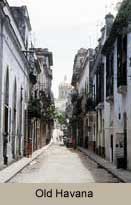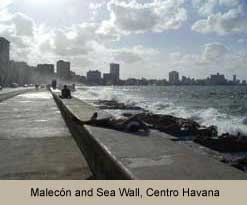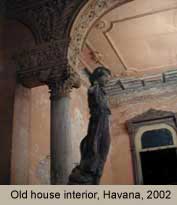


The significance of Dulce María Loynaz for Cuban Literature:

Pablo Armando Herrera, another major Cuban writer who was a close friend of Dulce María's, equates her work with that of Emily Dickinson in its themes and its cultural importance.
But this is puzzling. How can Dulce María be a major cultural icon of the 90’s and the equivalent of a Virginia Woolf or an Emily Dickinson, and yet not be an influence on contemporary poets, especially women? Perhaps the answer implies an especially subtle commentary on the position of the artist in revolutionary times.
Dulce María’s aristocratic upbringing and both personal and artistic connections with high culture are part of a kind of “arrogance,” as Morejón described it in her interview with Judith Kerman. Dulce María would probably have been the first to agree that her poems have an aristocratic and classical sensibility, not a good fit in an emphatically egalitarian revolutionary society. Morejón looks to works like Dulce María’s lyric novel Jardín for a more modern poetics, a poetics unlike the more traditional Cuban forms which were in use when it was written.

In fact, the world of the imagination which she creates would have been deeply reactionary in the post-Revolutionary Cuba of the 60’s. It seems both luxurious and somehow irrelevant even in today’s Cuba, where fantastic elements in the arts are more likely to be drawn from the Afro-Catholic folk materials of the Santería religion than from European mythology or the sensibilities of high Modernism, and where both revolutionary egalitarianism and economic hardship shape the realities of everyday life.

Thus, although Dulce María was extremely closemouthed about her political views during the years of her celebrity, she has been adopted – one might almost say rehabilitated – as a mother figure for Cuban feminism, an emblem of the importance of women and of culture created by women. In this sense, she has been politicized in spite of herself. Although she always had a lot of the characteristics often considered feminist, such as independence of mind and adventurousness, these are almost certainly more a matter of social class than of political principle. But in the context of the extreme machismo of official Cuban culture, she is a valuable role model, much respected by younger women writers and artists.
She has also become culturally useful to the larger Cuban nation. Her style is widely described as pure and classical, characteristics which would make it especially attractive to the Spanish Royal Academy of Language, sponsor of the Cervantes Prize, at a time when cultural ownership of the Spanish language and Hispanic literature is contested by authors writing in a Latin American idiom. For the first time, she is actively valuable to the Cuban Revolution, as an asset to the cultural legitimacy of Cuban literature.
As with so much of Cuban art and literature, Dulce María as cultural phenomenon is not able to avoid island and geopolitical entanglements even in her moment of triumph. But from a translator’s perspective, from the perspective of those who love literature in any language, she needs no rehabilitation.